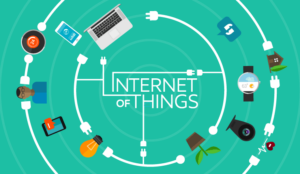Aurangzeb Khan of Jabra discusses how the latest in video technology can better support organizations in their collaboration efforts.
Which sense would you rely on most when it comes to making judgement calls? As humans, sound and sight are arguably our most important. But with the rise of artificial intelligence, we’re at the tipping point of giving machines the ability to make greater sense of their surroundings through video, and the potential big data and AI impacts are starting to surface.
Perhaps you’re in an HR or organizational role, or responsible for CRM. Or maybe you’re trying to make decisions reliant on broader business intelligence. Regardless, the range of data we have available to make these decisions with is growing each day, and thanks to new technologies, we’re entering a period in which cameras can operate as sensors. And when we apply AI algorithms to these video streams coming from cameras that act as sensors, the data lakes we can generate offer insights that can change the face of business.
In the future, not only will you be able to rely on your individual senses, but also on the big data insights from tech that can make sense of sight and sound.
While video collaboration systems in the workplace are not new, a few key changes in these systems are starting to unlock far greater potential. Firstly, advances in video have helped spur mass adoption of the medium, be it via YouTube, Snapchat and Instagram, or video calls on FaceTime or WhatsApp.
Secondly, cloud-based video collaboration solutions like Zoom or Microsoft Teams are increasing in ubiquity as standardized workplace collaboration tools.
In fact, we’ve seen cloud deployment continue to rise across enterprise as a whole. A recent Morgan Stanley CIO survey showed that cloud usage across platform and infrastructure services has risen 10%, just between Q1 last year and this year.
So, we’re at a point where cameras are standard in purpose-built collaboration workspaces, in a time in which the workforce is increasingly globalized.
Now, with advances in AI and camera technology, multi-camera arrays are able to act as sensors which provide AI algorithms the best opportunity to make sense of the video information and create data from it. And because Panoramic-4K video isn’t distorted like in an ultra-wide-angle lens, it enables AI algorithms to detect objects correctly. This ability to capture and interpret large amounts of anonymized people data is starting to unlock major productivity gains.
In the 2018 paper “The Digitization of the World, From Edge to Core” David Reinsel, John Gantz, John Rydning discuss AI driving even more automation into businesses, “feeding processes and engagements that will deliver new levels of efficiency and products that are tailored to business outcomes and individual customer preferences.”
Companies are already leveraging data to improve customer experience, make employees and processes more productive and create new sources of competitive advantage, and cameras will vastly improve those capabilities.
For example, by knowing how many people are present or if any person is present, we can create software control signals which enable systems to automate room reservation and release, or autonomously turn off power-consuming equipment when it is not needed, or analyse the seasonality and patterns of use of corporate real estate to decide how best to optimize it.
Several major multinationals we work with have over 30,000 collaboration spaces worldwide, so if you imagined being able to correct a 10% misuse rate with something like meeting room bookings, that turns out to be a pretty big deal across that business.
Just knowing something like how often and by how many people a space is used is incredibly valuable.
Over the space of a year, that data repository can offer a lot of business intelligence, and with the rising cost of real estate, utilizing it efficiently is a priority for most companies, as it affects everyone’s bottom line. This is anonymized numerical data, and it gives you the basis for data-driven decision making, which has been historically very sparse in real estate, for example.
In the future, it could be used to build heat flows for architectural design, creating smarter buildings and cities, and saving businesses millions.
As Frank Bien, CEO and President of Looker said: “Data is now fundamental to how people work and the most successful companies have intelligently integrated it into everyone’s daily workflow. Data is the new application.”
Mary Meeker surfaced this overall rise in her 2019 Internet Trends Report, and I am most excited about the data and collaborative power of workplace video in the coming year.
Whether you’re looking to develop your people and organizational management, create new data streams and business intelligence, or simply boost employee efficiency, video will be key.
Also, while video will be essential for businesses both for their employees and customers, utilizing the data lakes available from these video cameras is where the real advantages will lie in the future.
Author: Guest Author
Published On: 30th Oct 2019
Read more about - Guest Blogs, Jabra





































